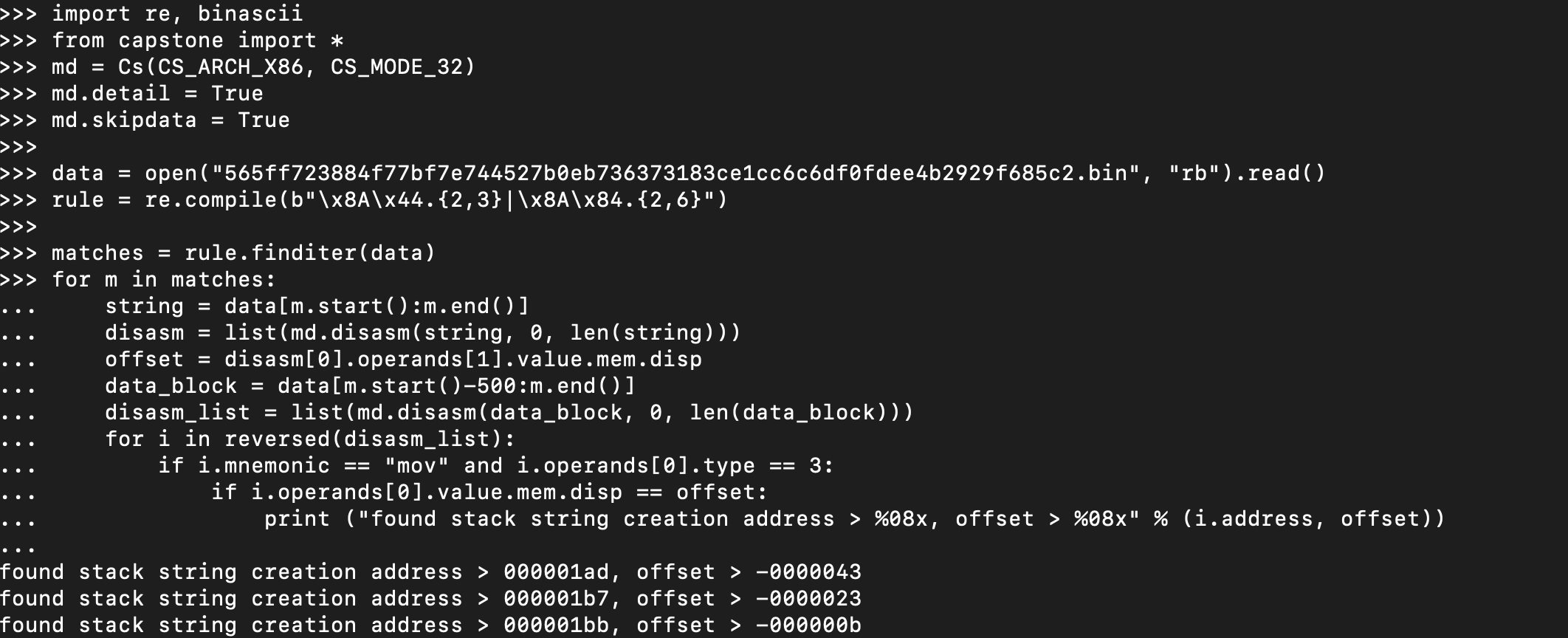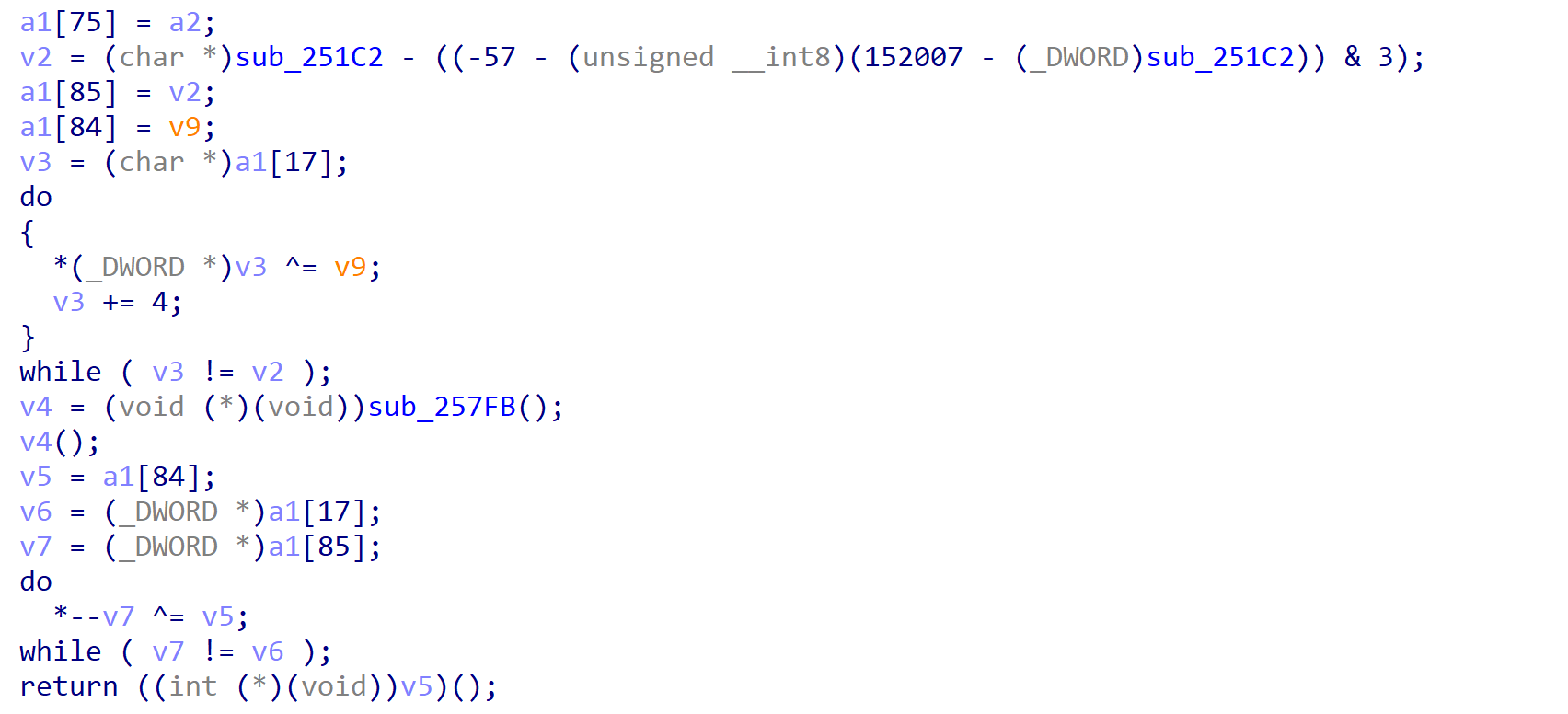In this post, I will explain how you can locate cross references programmatically using Python modules that are generally helpful in reverse engineering. As you can see, this will be my first post on 0ffset, and I had gotten the idea to write about this after gaining inspiration from 0verfl0w’s post on using Capstone and […]
It’s not uncommon to come across some kind of string encryption functionality within malware samples, often more complex than a simple single-byte XOR operation which can often be brute-forced with simplicity. By encrypting strings, malware authors are able to potentially lower the detection rate by anti-malware software, obscuring strings that may be identified as “malicious”, […]
Python malware has always held a place in my heart, being the language I first learned it was also the language I first used to explore the world of malware development, through basic reverse shells and keyloggers to process injection and remote access tools. Malware developed in Python has often thought to be entry-level, given […]
For those that often enjoy reverse engineering shellcode, or obfuscated malware in general, you may have come across an interesting “malware” family named GuLoader – malware in quotations as it has in the past been linked to a company selling a software packer named CloudEyE (see: Checkpoint Research), though it does appear most of it’s […]
YARA is an important tool for any aspiring threat intel analyst or reverse engineer, whether for detecting code reuse among different families, identifying samples utilising a certain technique, or even tracking the development of recently discovered malware. While using simple string patterns for rules can be an efficient method for quickly building detections, it is […]
Introduction Snake Ransomware (or EKANS Ransomware) is a Golang ransomware which in the past has affected several companies such as Enel and Honda. The MD5 hashing of the analyzed sample is ED3C05BDE9F0EA0F1321355B03AC42D0. This sample in particular is obfuscated with Gobfuscate, an open source obfuscation project available on Github. Let’s start by quickly summarizing the functionality of the […]







